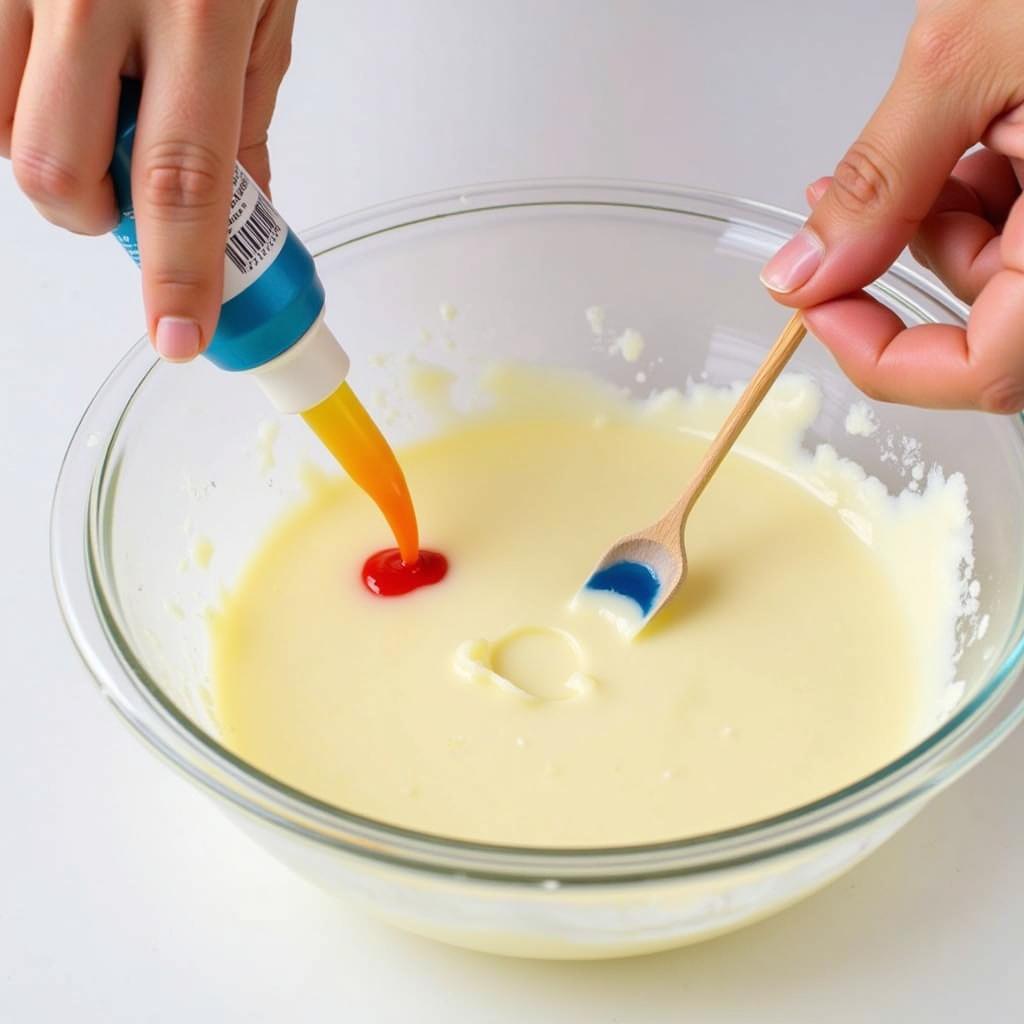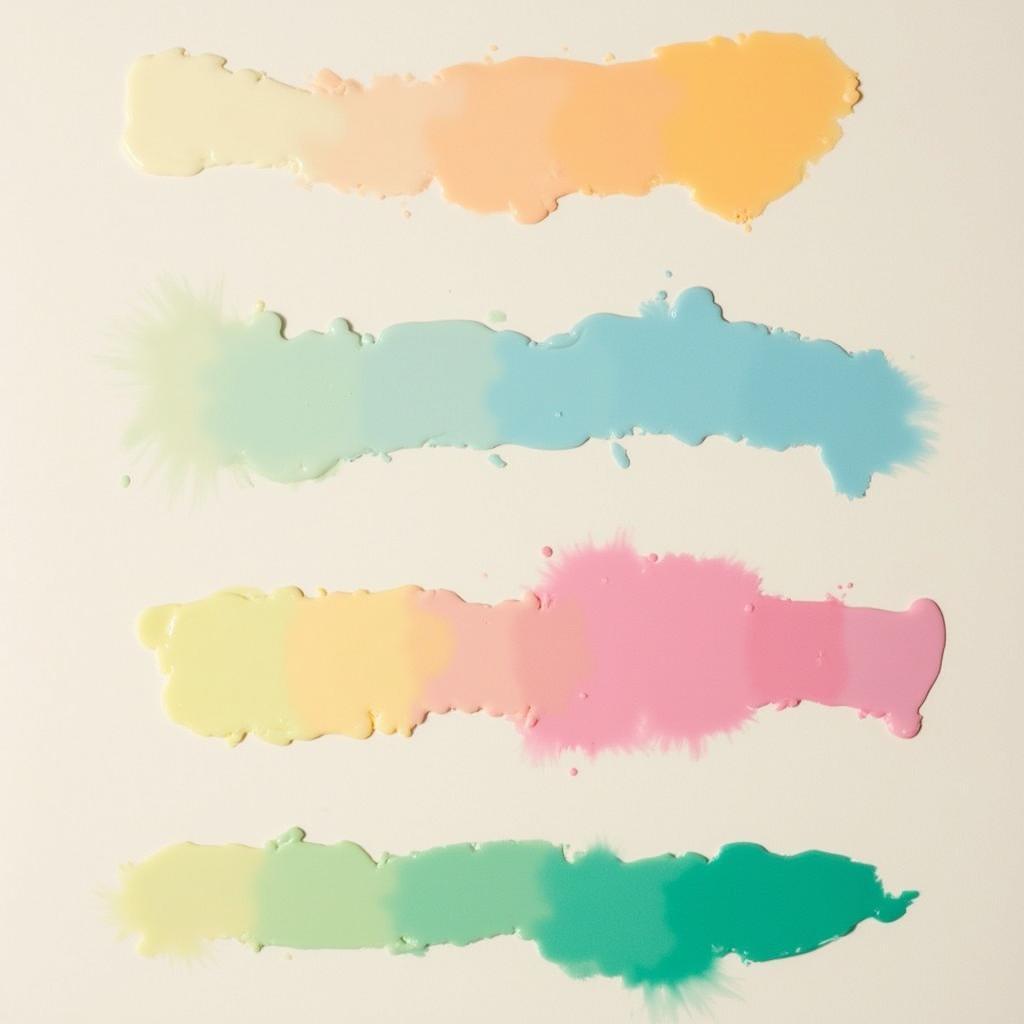Adding color to white chocolate opens up a world of creative possibilities, from vibrant cake decorations to uniquely hued candies. But the process requires a little more finesse than simply stirring in any food coloring you have on hand. The type of food coloring you use can dramatically affect the texture and final appearance of your white chocolate. So, can you put food coloring in white chocolate? Yes, but let’s explore the best way to do it to achieve those picture-perfect results.
Choosing the Right Food Coloring for White Chocolate
Not all food colorings are created equal, especially when it comes to white chocolate. Using the wrong kind can lead to a seized, clumpy mess instead of the smooth, vibrant hue you’re aiming for. Water-based food coloring is your enemy here. The water content will disrupt the delicate emulsion of the chocolate, causing it to seize. So, what are your options?
Oil-based food colorings are your best bet. They blend seamlessly with the chocolate’s fat content, resulting in a smooth, even color. Another excellent choice is powdered food coloring specifically designed for chocolate. These highly concentrated pigments provide rich, vibrant colors without altering the chocolate’s consistency. You can also use gel food coloring, but make sure to use it sparingly as a little goes a long way. Similar to how do you color modeling chocolate, achieving the right shade involves careful and gradual addition of color.
 Adding oil-based food coloring to melted white chocolate
Adding oil-based food coloring to melted white chocolate
How to Color White Chocolate
Melting your white chocolate properly is the first crucial step. Use a double boiler or microwave in short bursts, stirring frequently to prevent scorching. Once melted and smooth, it’s time to add your chosen food coloring. Start with a small amount, a drop or two, and mix thoroughly. Remember, you can always add more color, but you can’t take it away!
For oil-based or powdered colors, stir until the color is evenly distributed. For gel colors, ensure it’s fully incorporated to avoid streaks. If you’re aiming for a pastel shade, remember that the color will deepen as the chocolate sets. Just like when considering can you put gel food coloring in candy melts, the type of coloring used significantly influences the final outcome.
Troubleshooting Common Coloring Problems
Sometimes, despite your best efforts, you might encounter issues. If your white chocolate becomes thick or grainy after adding color, it might be due to the coloring agent, or perhaps the chocolate was too hot. Try adding a small amount of paramount crystals or shortening to help restore the smooth consistency. This method is somewhat similar to what are oil based food coloring in terms of addressing consistency issues.
Can You Use Regular Food Coloring in White Chocolate?
While we strongly advise against using regular water-based food coloring in white chocolate, if it’s your only option, add it very sparingly. Try adding a drop of coloring to a teaspoon of oil or shortening first, then incorporating this mixture into the melted chocolate. This can minimize the risk of seizing, though it’s not foolproof.
How Do I Achieve Specific Colors with White Chocolate?
Creating specific shades with white chocolate can be tricky. Start with a color wheel and experiment with different ratios of primary colors to achieve your desired hue. Keep in mind that white chocolate’s natural ivory tone will influence the final color. For instance, creating a true red might require more coloring than achieving a lighter pink. This process shares similarities with creating how to make maroon color frosting, where careful color blending is crucial.
 Different shades of colored white chocolate
Different shades of colored white chocolate
Conclusion
Coloring white chocolate opens up a world of culinary creativity. By using the right type of food coloring and following the correct techniques, you can transform ordinary white chocolate into vibrant, eye-catching treats. Remember to choose oil-based or powdered food colorings for the best results and always add color gradually. With a little practice, you’ll be a master of colorful confectionery creations.
FAQ
-
What type of food coloring is best for white chocolate? Oil-based or powdered food coloring designed for chocolate is recommended.
-
Can I use liquid food coloring in white chocolate? It’s best to avoid water-based liquid food coloring as it can cause the chocolate to seize.
-
How do I fix seized white chocolate? Try adding paramount crystals or shortening in small amounts.
-
How do I achieve specific colors with white chocolate? Use a color wheel and experiment with different ratios of primary colors.
-
Why did my white chocolate become grainy after adding color? This could be due to the type of coloring used or the temperature of the chocolate.
-
What should I do if my color is too light? Add more coloring gradually until the desired shade is reached.
-
Where can I buy oil-based food coloring? Specialty baking stores or online retailers often carry oil-based food colorings.
Need more help? Contact us! Phone: 0373298888, Email: [email protected] or visit us at 86 Cau Giay, Hanoi. Our customer service team is available 24/7.